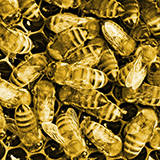

![]()
home
::: about
::: news
::: links
::: giving
::: contact
![]()
events
::: calendar
::: lunchtime
::: annual
lecture series
::: conferences
![]()
people
::: visiting fellows
::: postdoc fellows
::: senior fellows
::: resident fellows
::: associates
![]()
joining
::: visiting fellowships
::: postdoc fellowships
::: senior fellowships
::: resident fellowships
::: associateships
![]()
being here
::: visiting
::: the last donut
::: photo album
::: center home >> people >> visiting fellows, 2015-16 >> |
||||
| Michel Janssen I am a 1995 graduate of the Pitt HPS department. I was the first of many students advised by John Norton. My dissertation focused on the contributions of one of my countrymen, the Dutch physicist Hendrik Antoon Lorentz, to the development of special relativity. In 2000, after a few years with the Einstein Papers Project and the Department of Philosophy at Boston University, I moved to the University of Minnesota, where I became a faculty member of the Program in the History of Science, Technology, and Medicine and a fellow of the Minnesota Center for Philosophy of Science. I am also a regular visitor in Jürgen Renn's department of the Max Planck Institute for History of Science in Berlin. I am excited about returning to Pitt for a longer period of time to work on several projects. 1. Continue to cash in on the centenary of general relativity (including a talk in the Pitt physics department and a guest lecture in John Norton's graduate seminar on relativity). 2. Revisit a 2002 paper on a special form of Inference to the Best Explanation (IBE) that I dubbed Common Origin Inference (COI) (see the September 18 lunchtime colloquium of the Center). I plan to spend most of my time, however, on two other projects. 3. "Arches and scaffolds," a metaphor (or maybe even a model) meant to capture both continuous and discontinuous elements in theory change (and the topic of my Pitt alumni lecture in 2013). 4. A book together with Tony Duncan, a high-energy theorist in the Pitt physics department, on the conceptual development of quantum theory from 1900 to about 1930. This book is a natural continuation of a series of papers we have written over the past decade on various episodes in this development. We hope to write it in such a way that it can be used as a textbook on the subject for advanced undergrads and beginning grad students in both physics and history and philosophy of physics. 2016 Update It was great to be back at Pitt for a semester last fall and to interact again on a daily basis with my PhD adviser John Norton. A big thank you to Tony Duncan who put me up at his new place five minutes from the Cathedral so that we could work on our joint book with the working title "How did we get to quantum mechanics?" I spent the second half of my sabbatical at the MPIWG in Berlin where I've been member of Jürgen Renn's team working on the history of physics for many years. Jürgen nominated me for a Humboldt Research Award. I got it! Easily the biggest thing I've ever won. It'll give me the opportunity to come back to Berlin the next two summers to work with Jürgen on my "Arches and Scaffolds" project (check out my home page if you want to find out what that's all about). Before I go back the US, my wife Suzy and I will be visiting our friends Aristidis Arageorgis and Antigone Nounou in Athens.
|
|
|||
